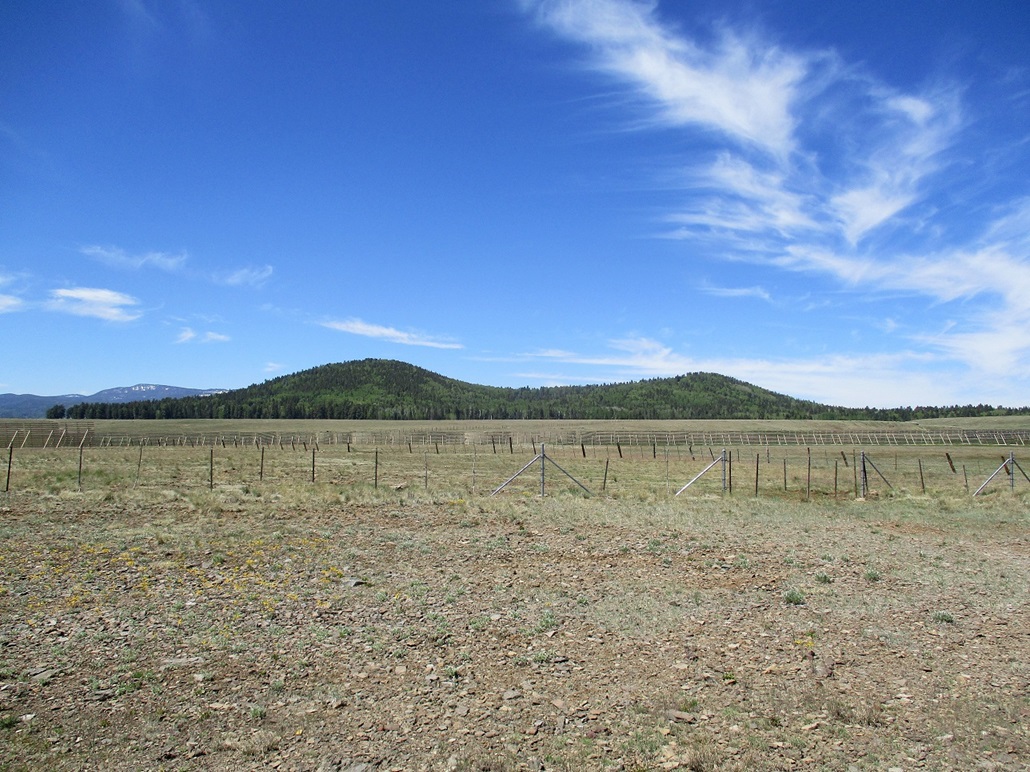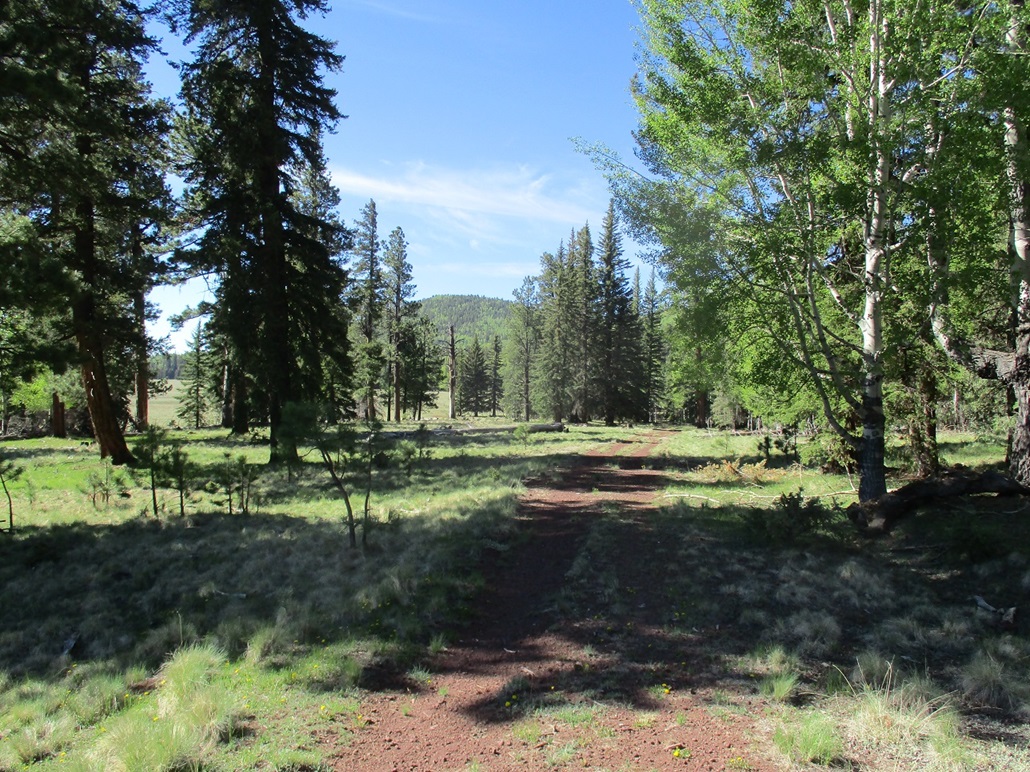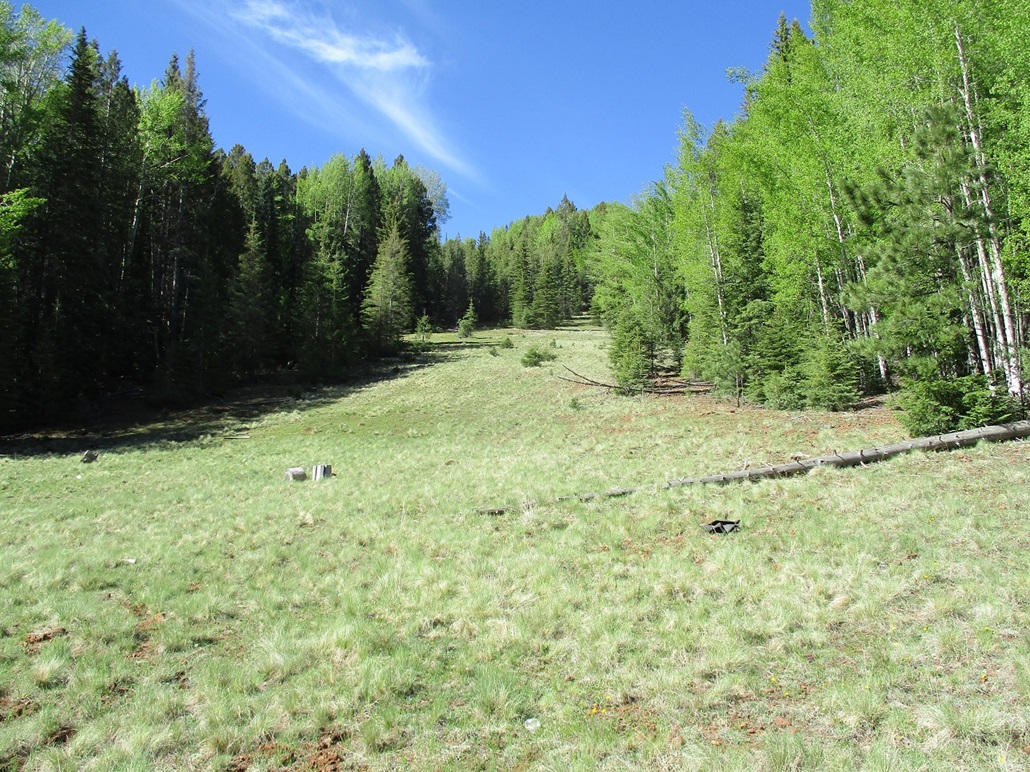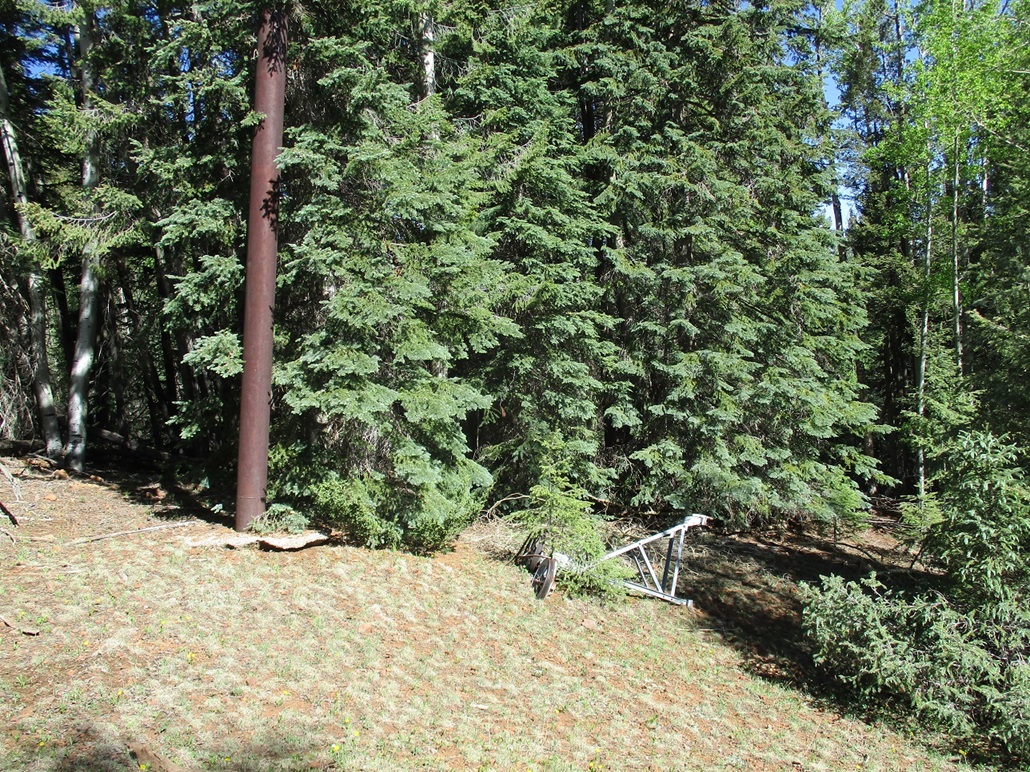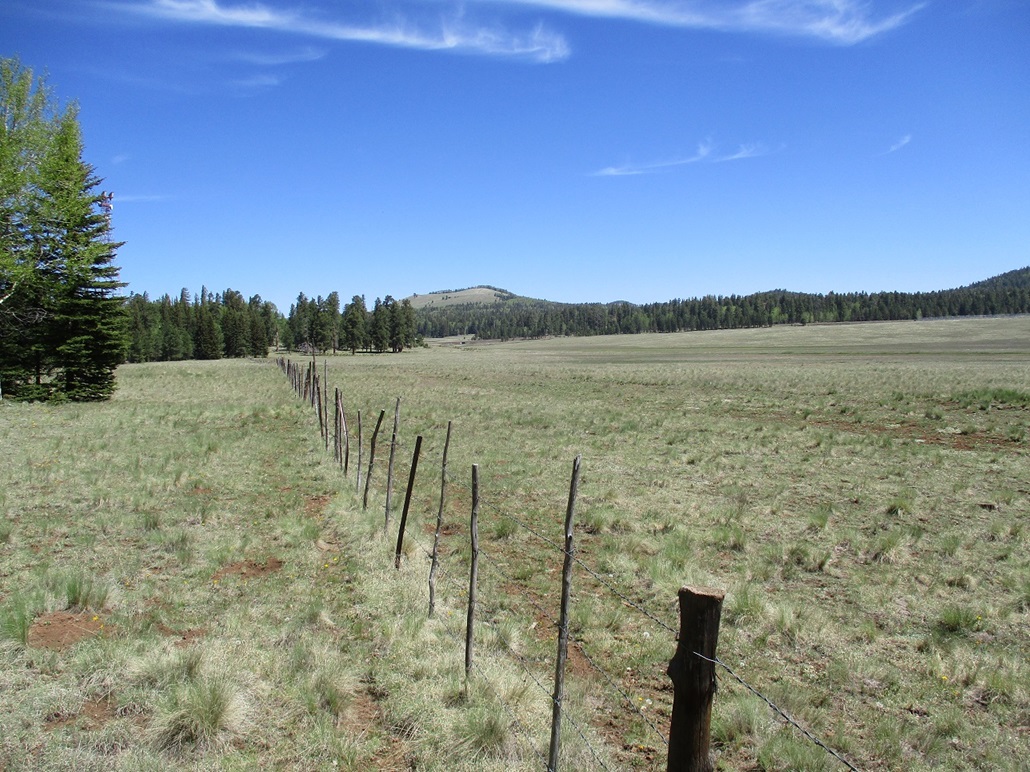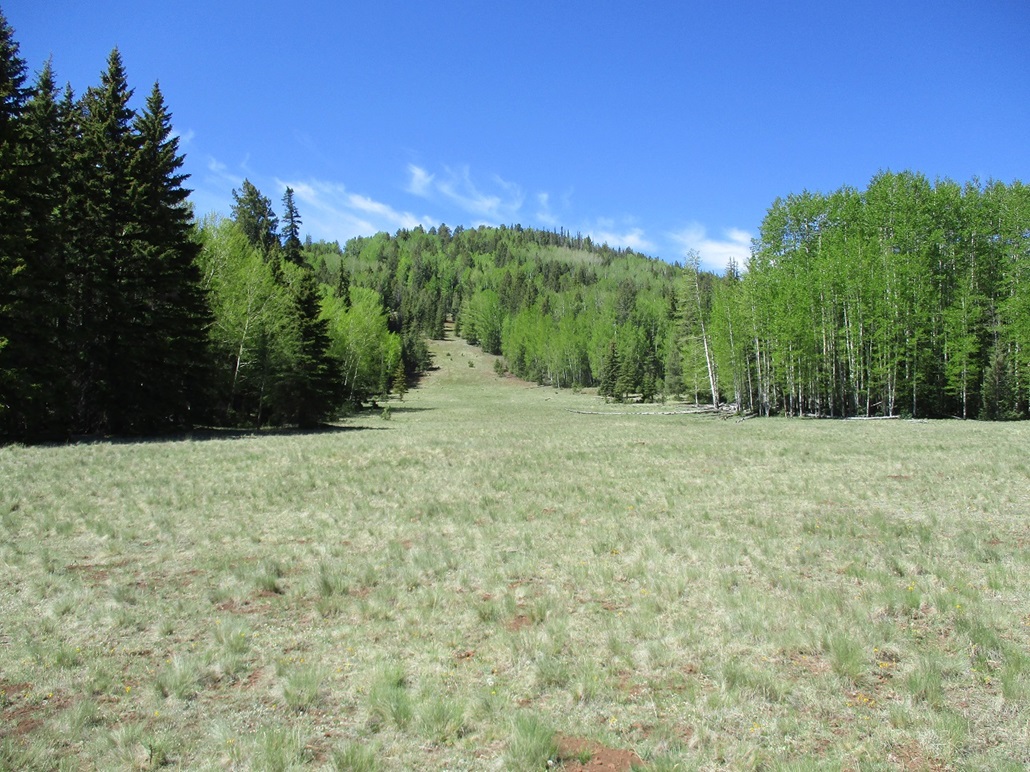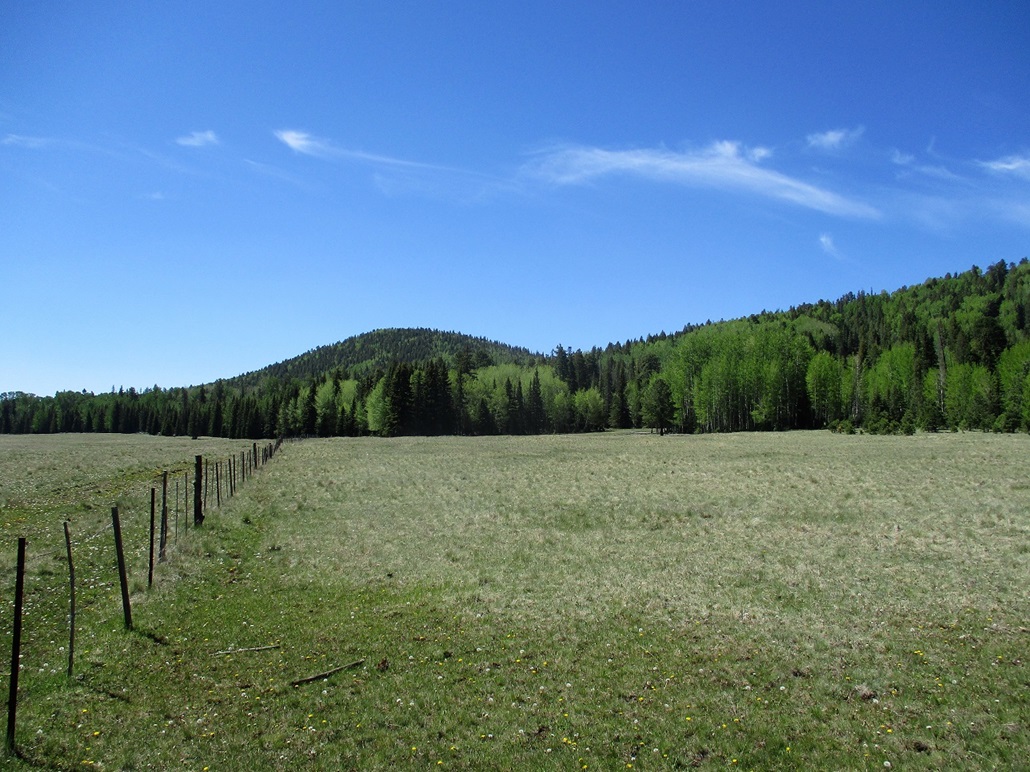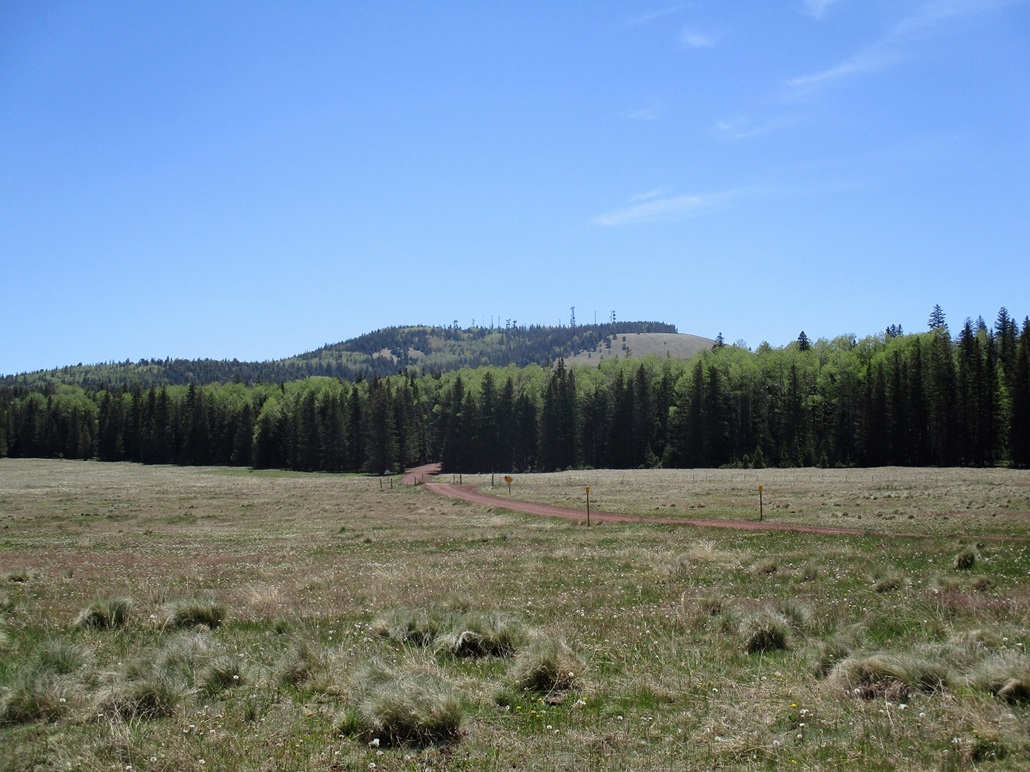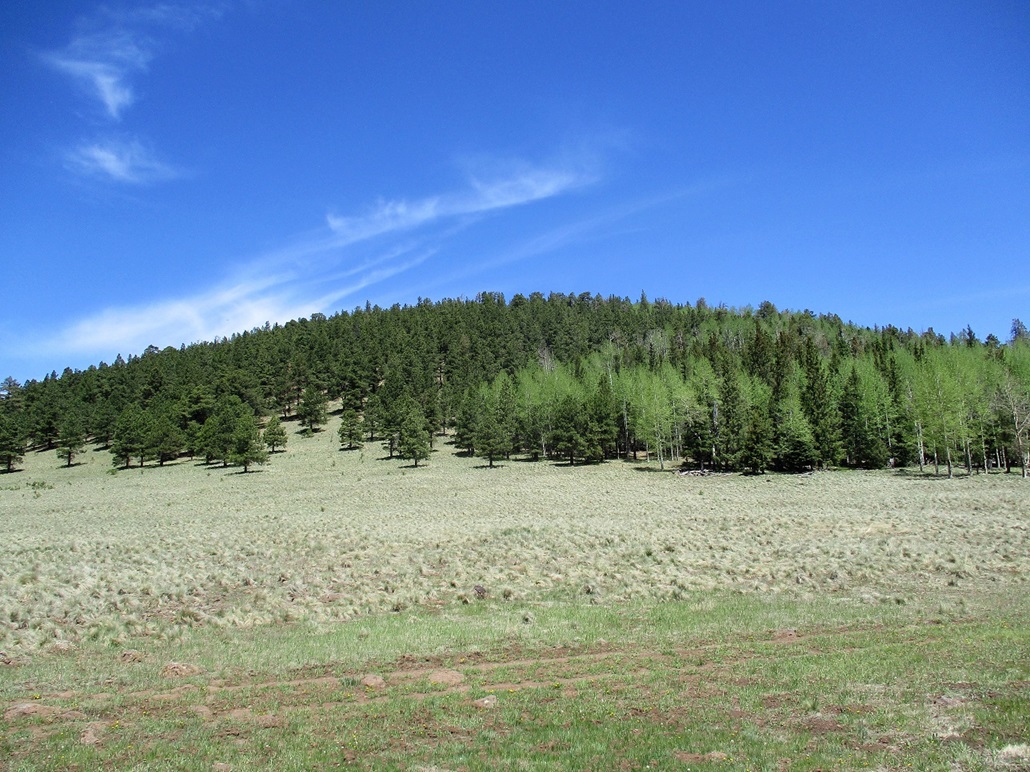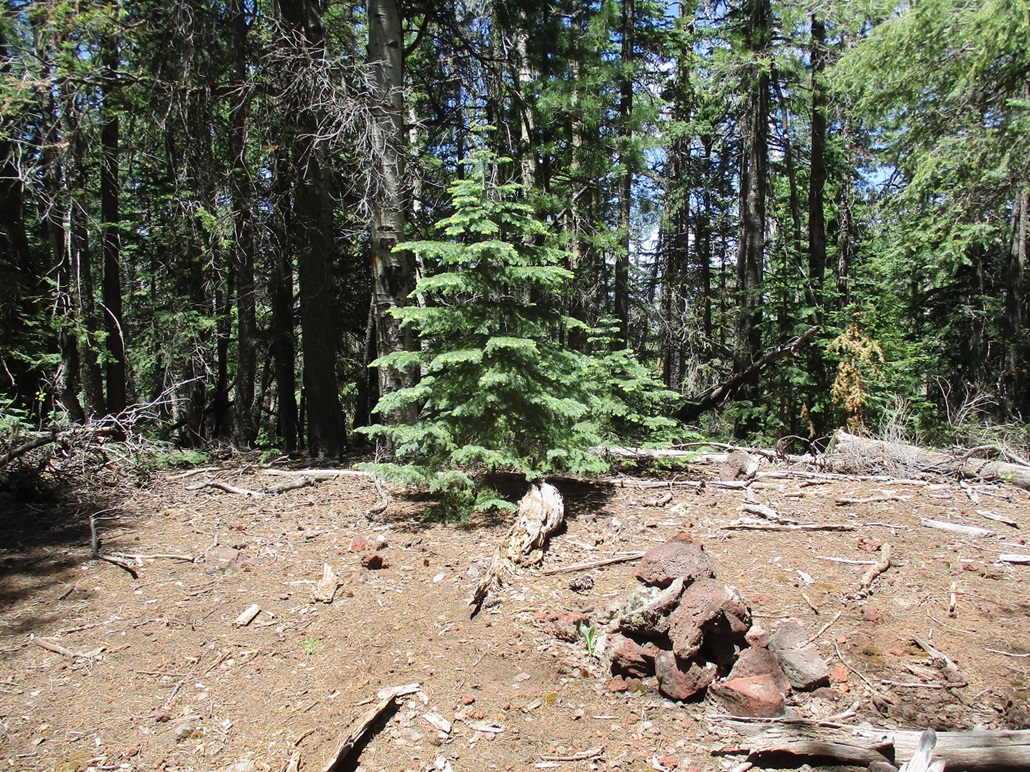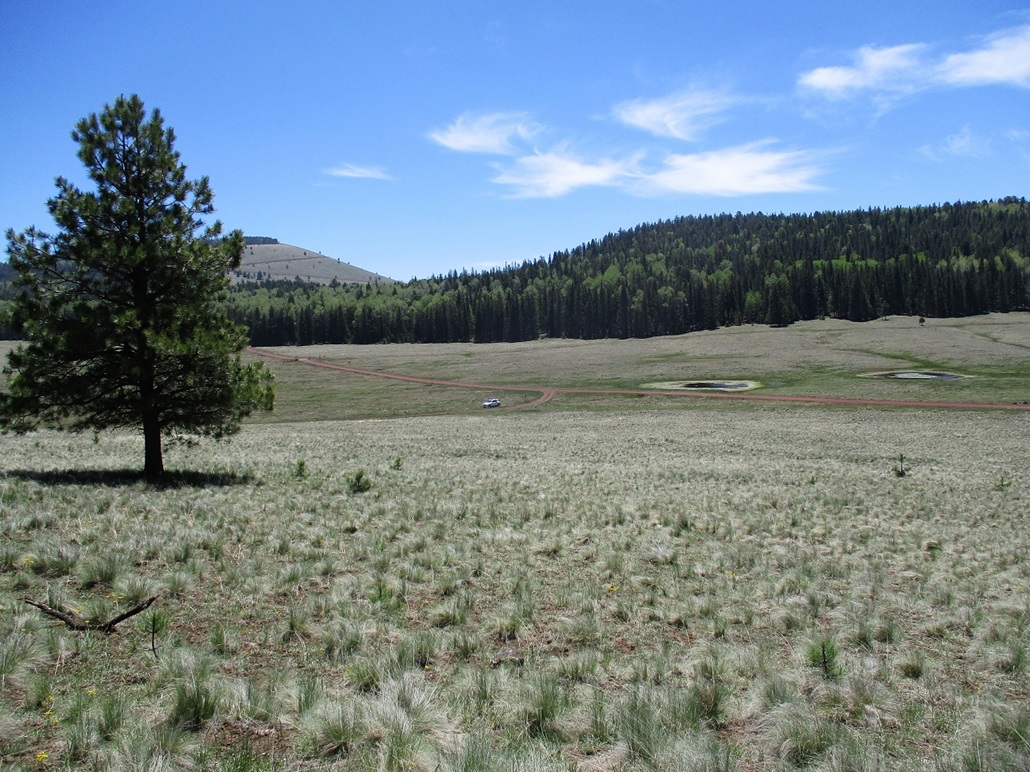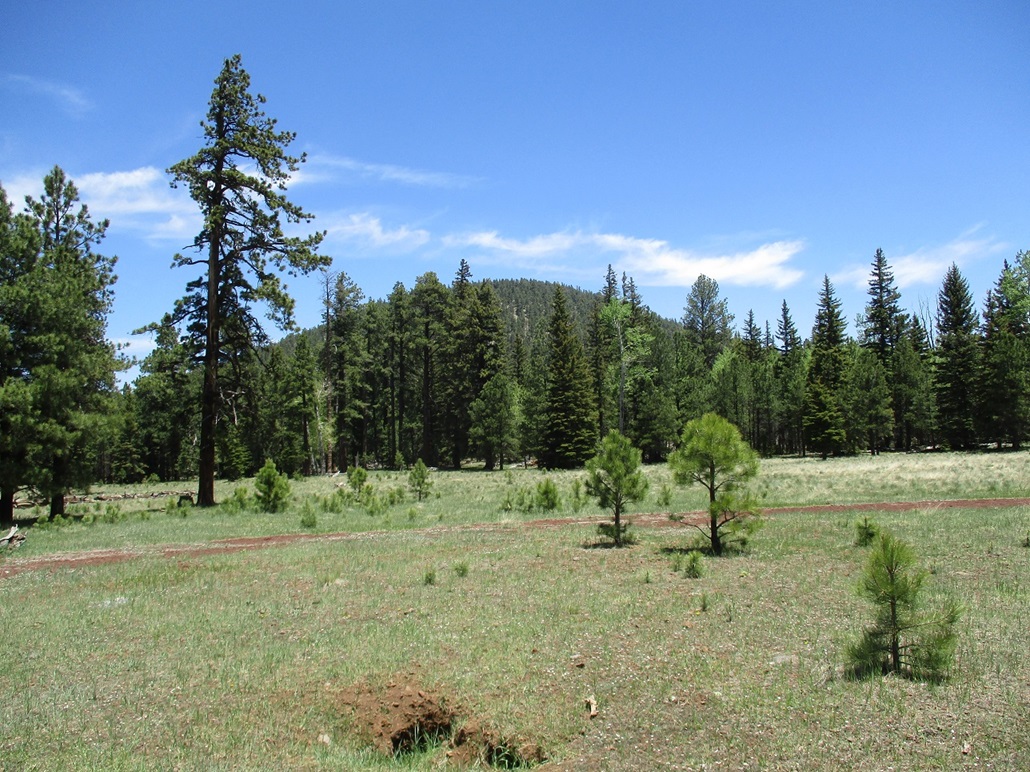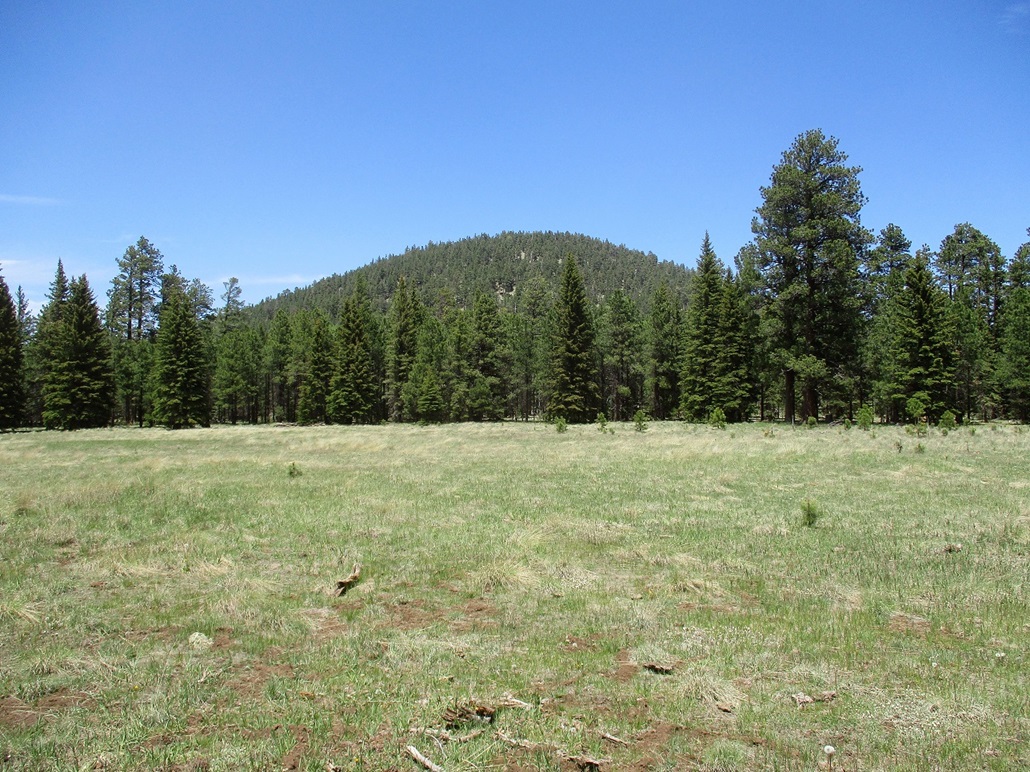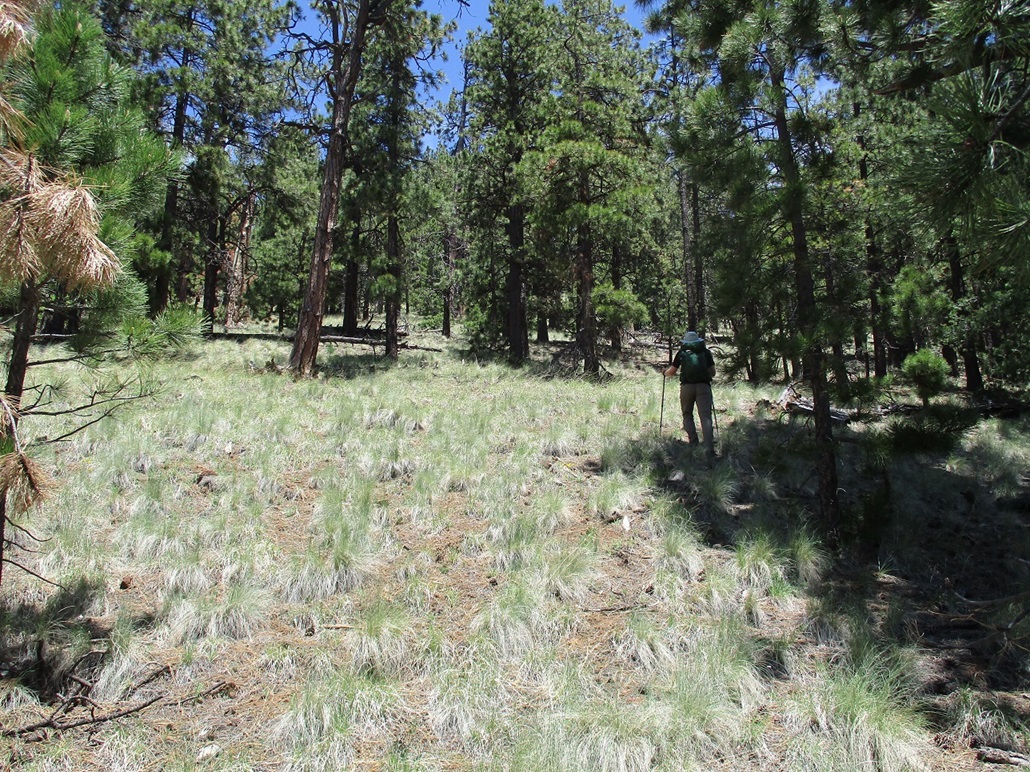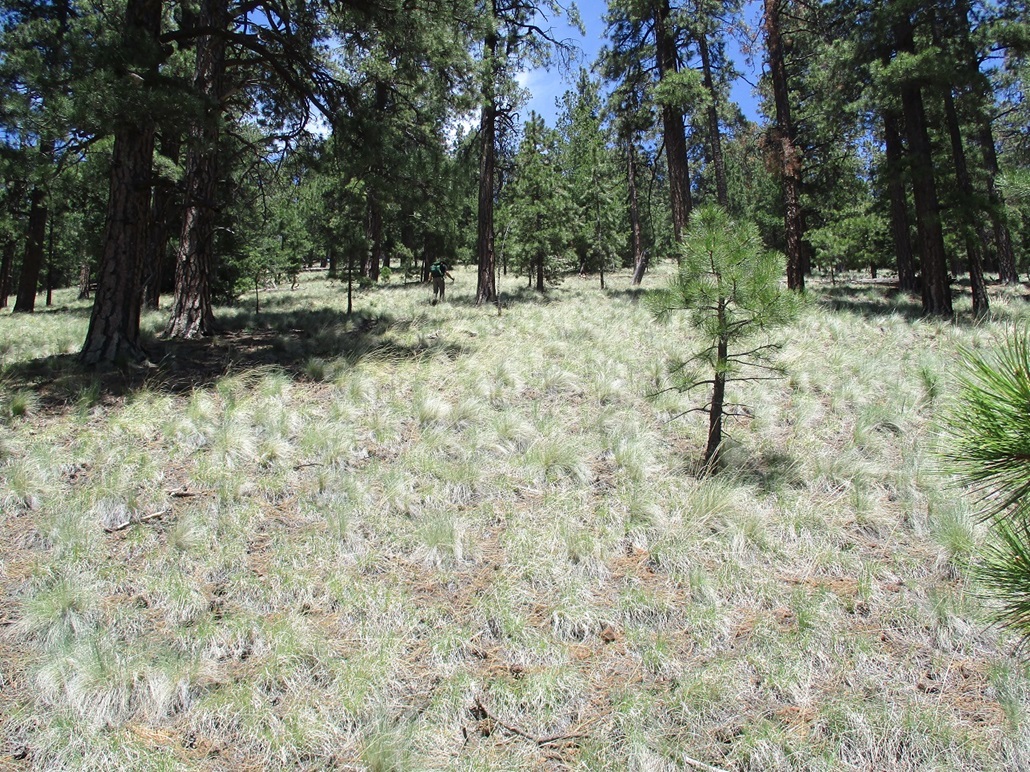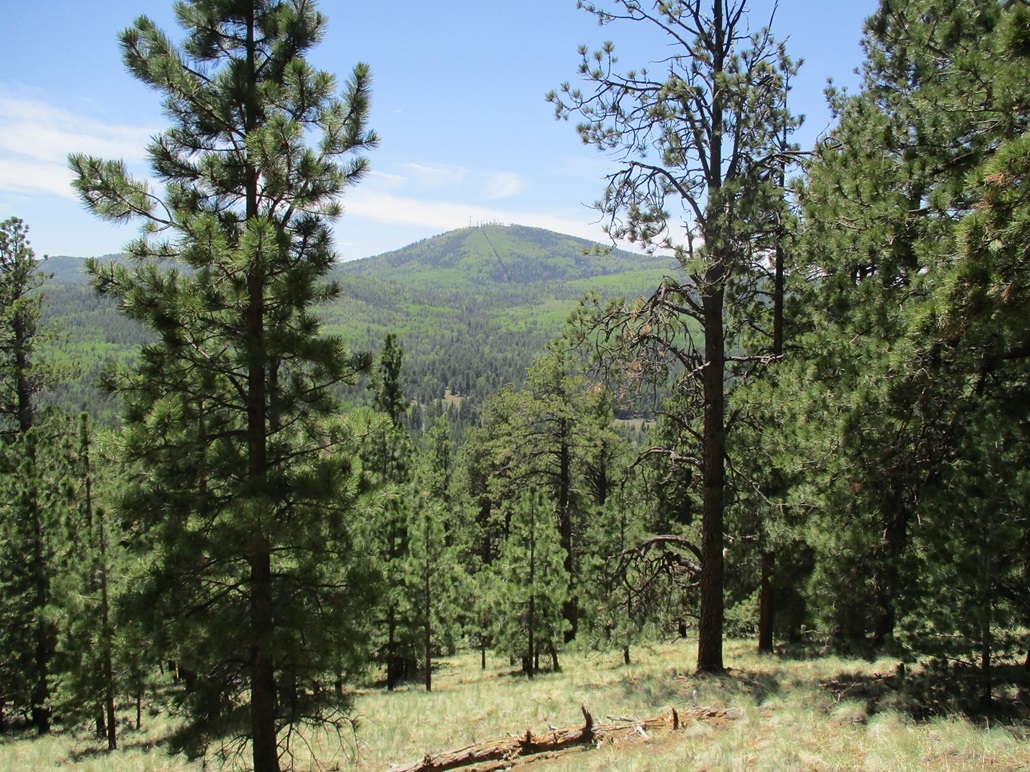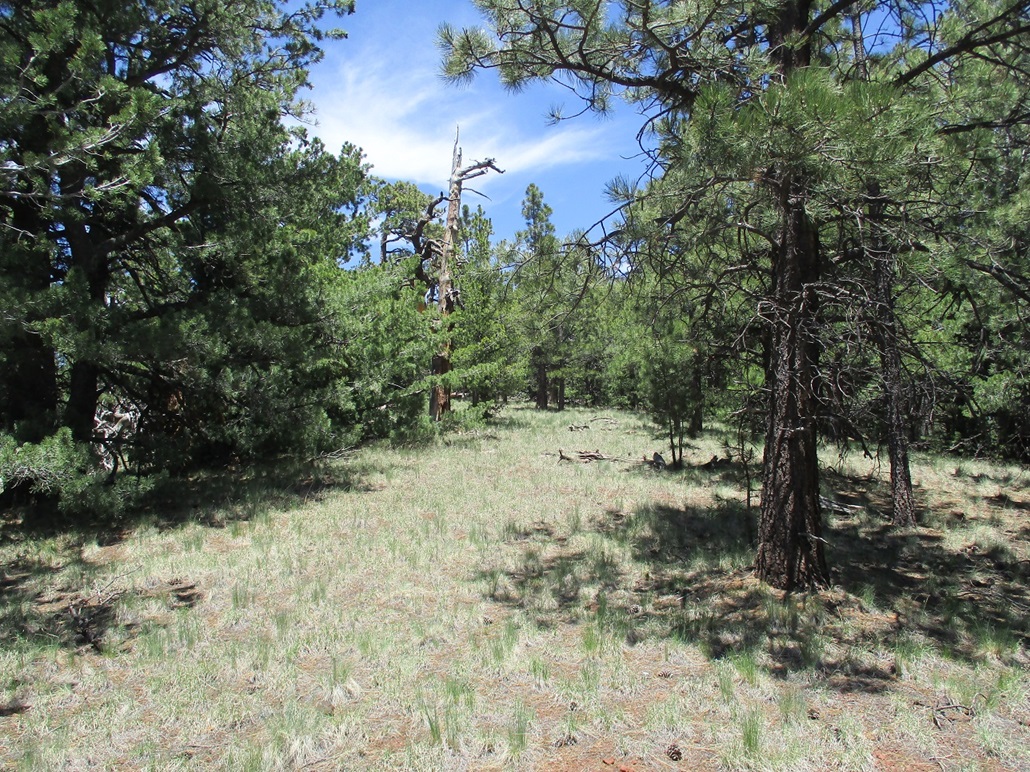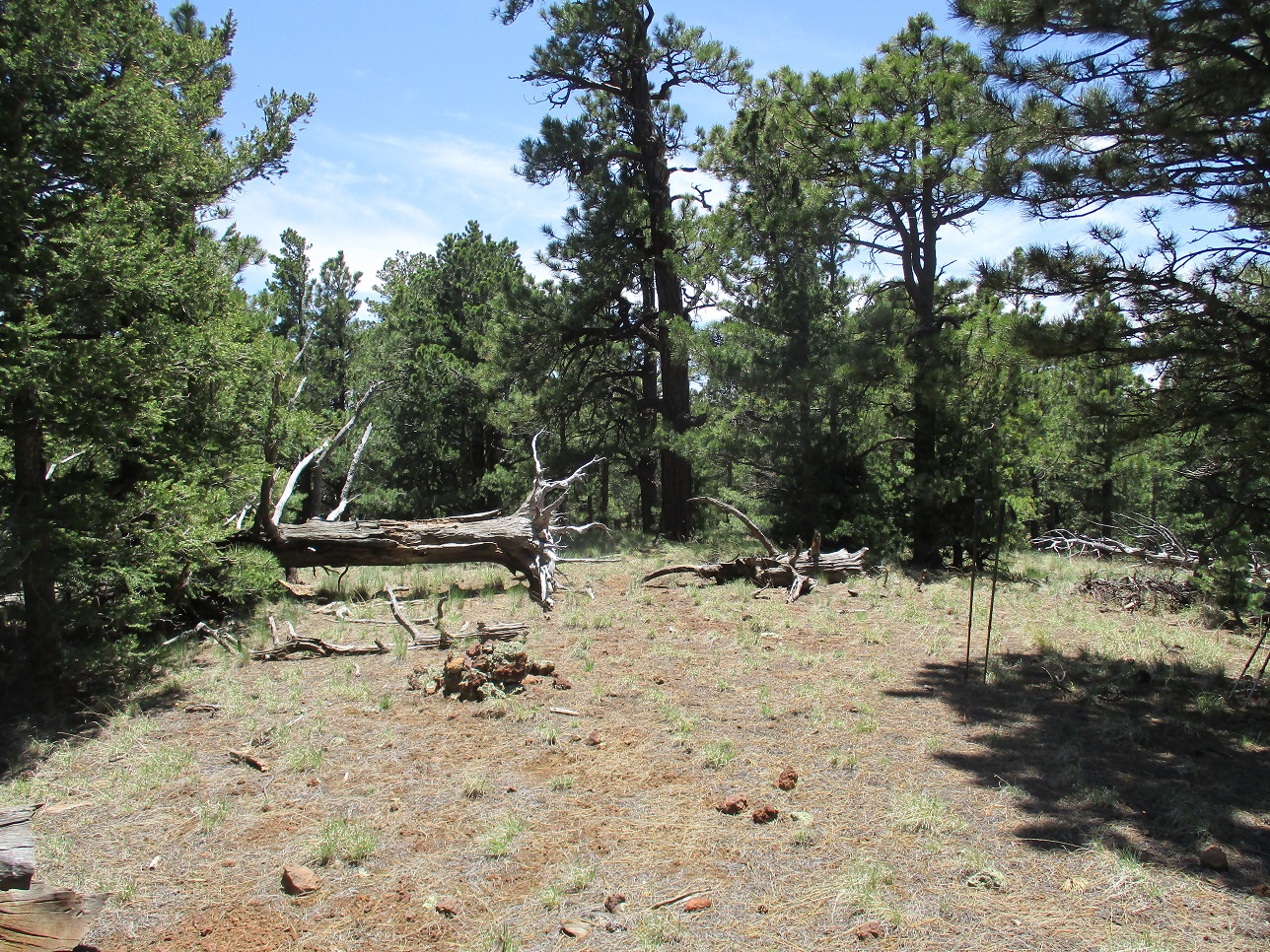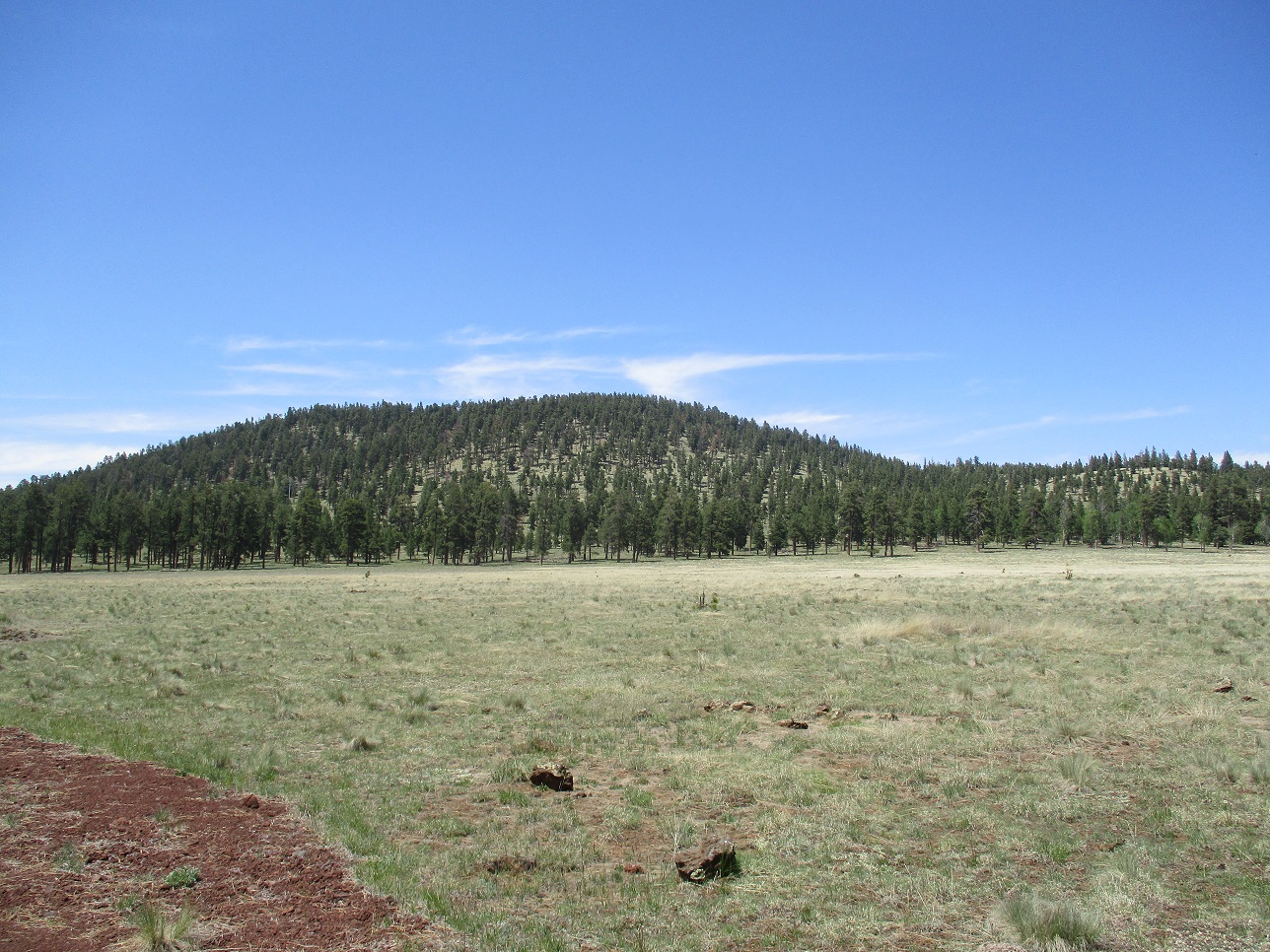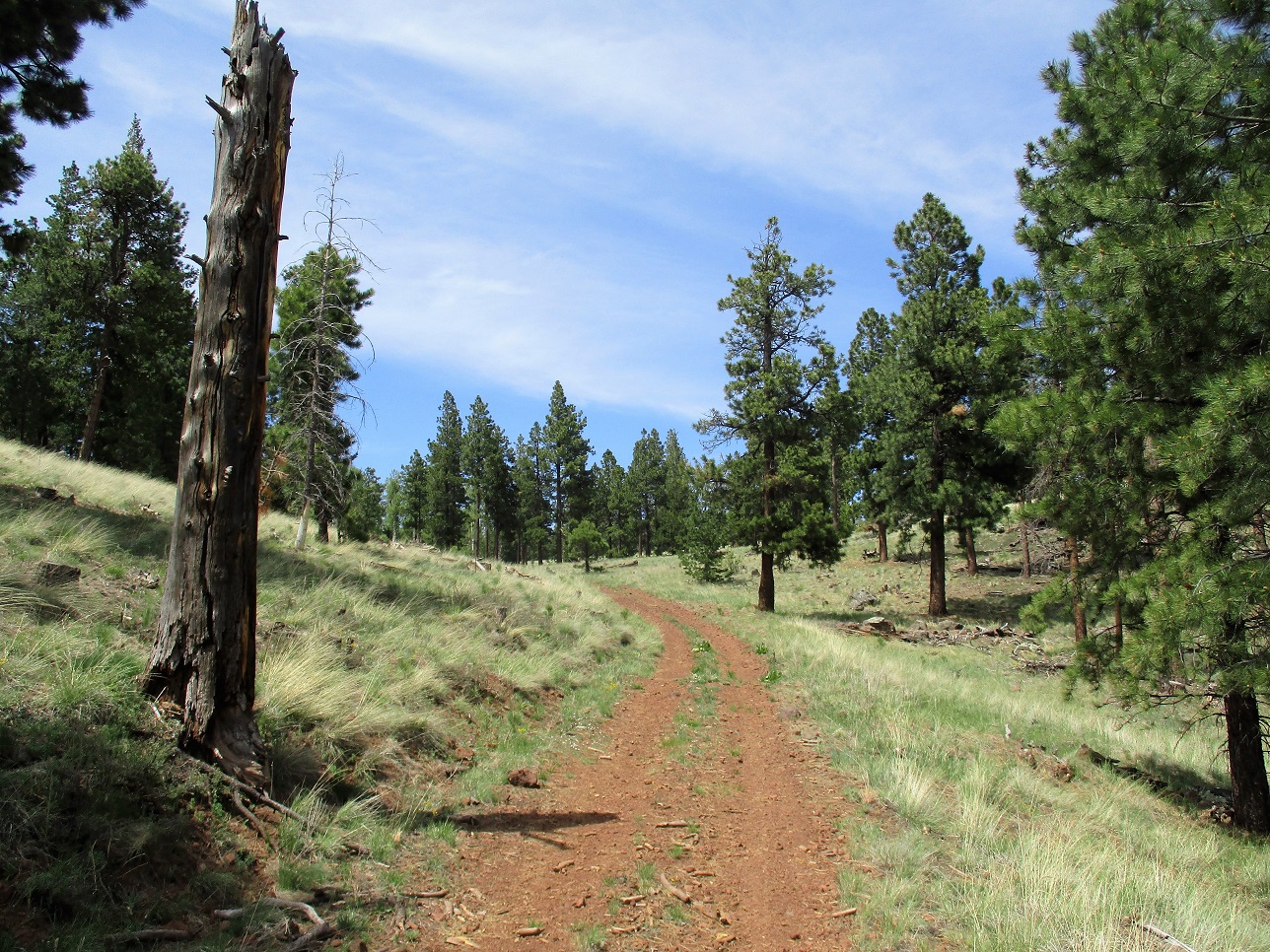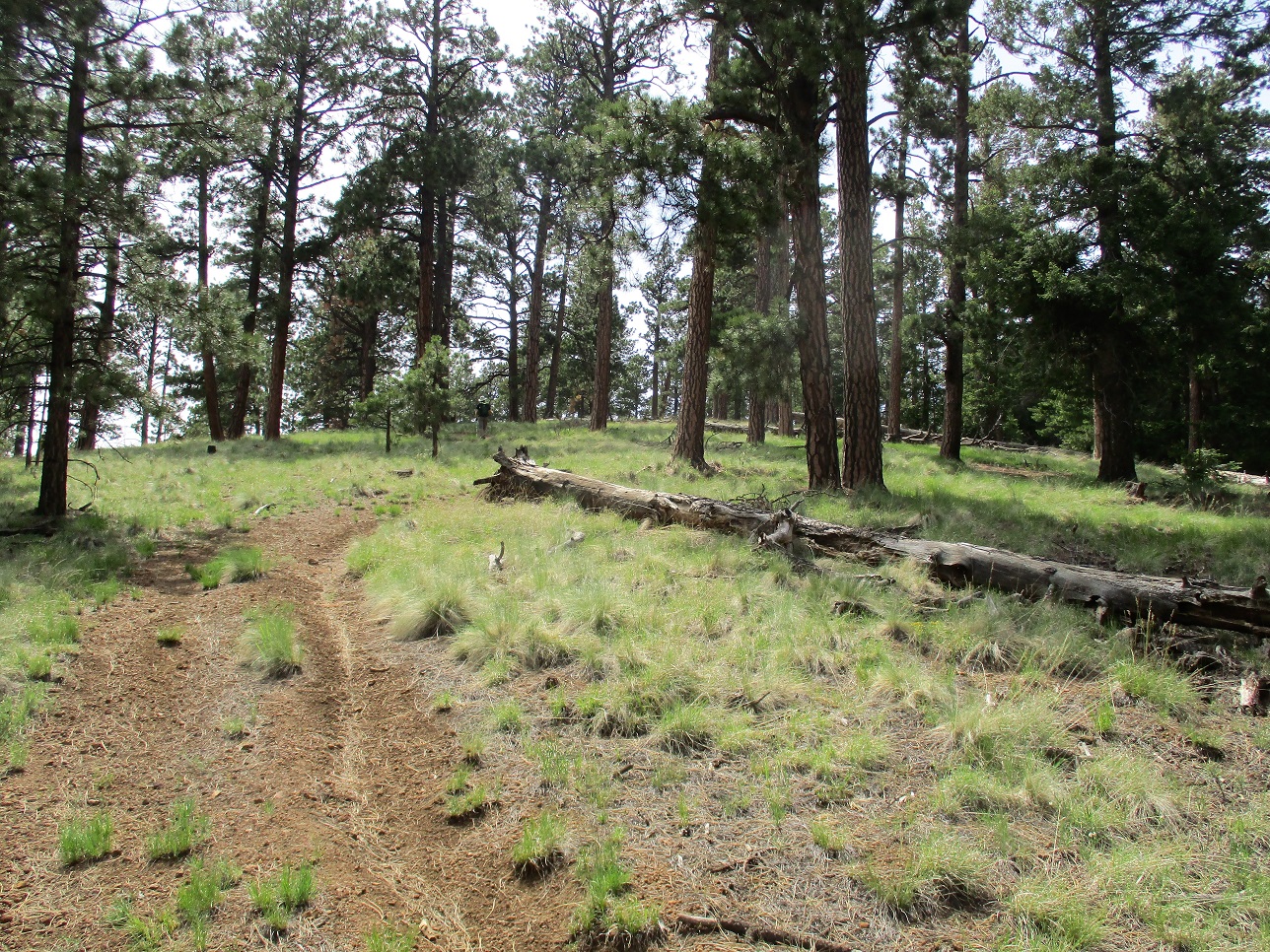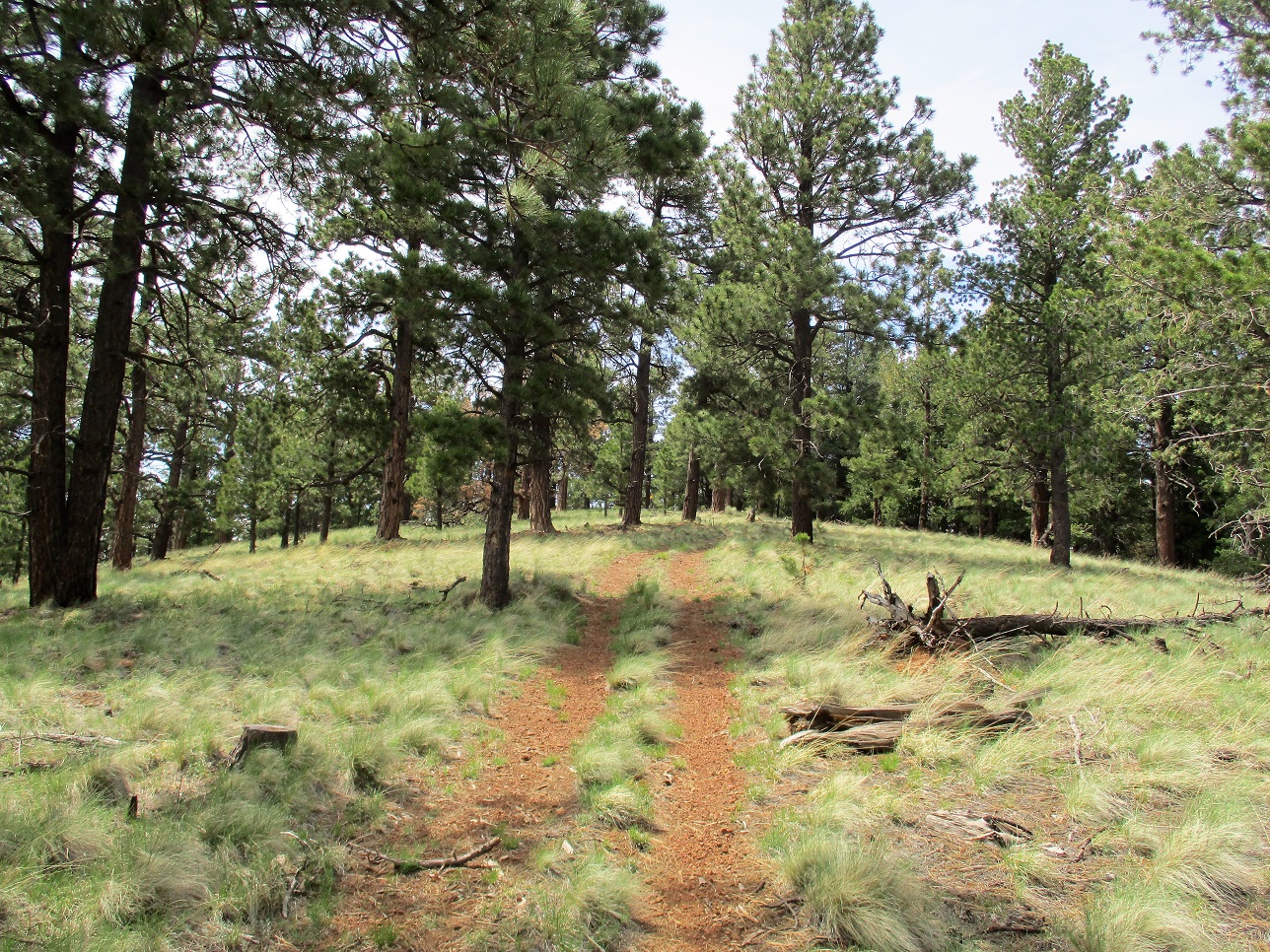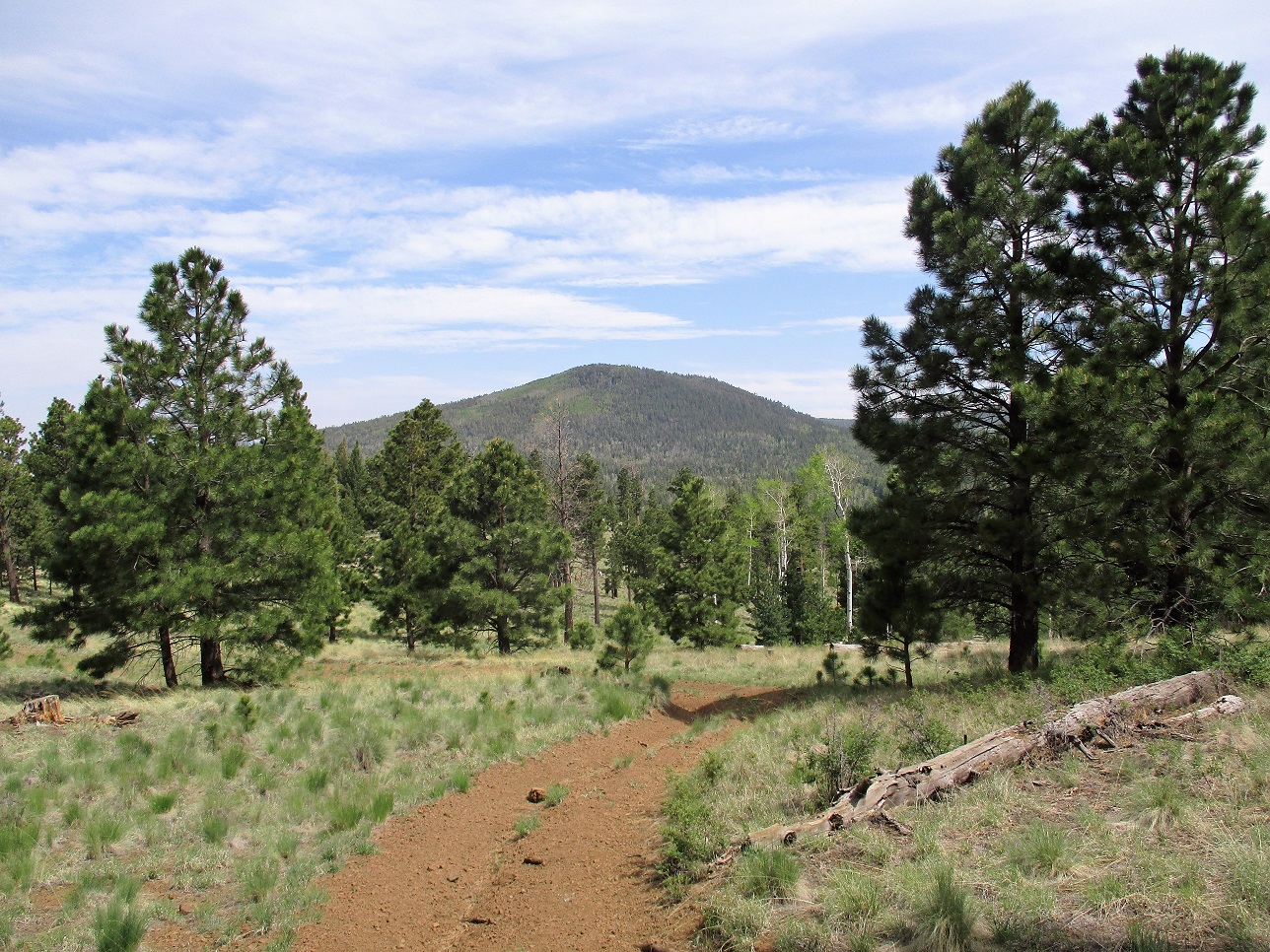
The Mountains of Arizona
• www.surgent.net
|
|
Big Cienega Mountain • Peak 9559 Matthias and I met and climbed four 9,000-foot peaks on the Springerville Volcanic Field, north of Mount Baldy. This is an area dotted with numerous volcanic mounds of rock, grass and ponderosa forest. None of the hikes would be challenging, but over the course of the day, we would be getting a good workout. For me, this was my first time back since 2014. Although the four peaks we climbed today essentially look identical, according to their official names, we'd be climbing a mountain, a peak, a dome and a knoll today. That would provide some variety.
Date: June 9, 2019
• Elevation: 9,635 feet
• Prominence: 465 feet
• Distance: 2.6 miles
• Time: 1 hour, 45 minutes
• Gain: 500 feet
• Conditions: Sunny and pleasant
• Teammates: Matthias Stender
Arizona
•
Main
•
PB
•
LoJ
•
Interactive map
We met early at the Wal-Mart in East Mesa, then Matthias drove us to the Sunrise Ski Area via Globe and Show Low. We were nearest our first objective, Big Cienega Mountain, a little after 8 a.m.. The day was sunny and cool, a nice contrast to the deserts back home, where temps would near 110 today. We pulled into the Railroad Grade Trailhead parking area. Big Cienega Mountain lies south of State Route AZ-260, mostly within the Fort Apache Indian Reservation. We were barely outside the boundary, on Apache National Forest land.
We were hiking at 8:20, trudging uphill along a dirt road that leads to a gravel pit and a communications tower. I could feel the elevation within the first ten steps. We had started the day at about 1,200 feet elevation, and now here we were at almost 9,000 feet. I had to slow down and get into a rhythm. We would initially be approaching the peak from the east side of the little massif.
The road angles left past the gravel pit and the tower and levels, coming to a barbed-wire fence, the boundary of the Rez. We crossed at a spot where a few of the strands had been snipped. We followed a scanter road south, with decent-sized trees growing in it to suggest no one's driven this road in perhaps 25 years. The track actually dropped about 40 feet elevation and grew more indistinct until it simply disappeared.
We were now at the base of an open slope, so we angled right and hiked uphill. The slope seemed a little too neatly cut from the surrounding forest. Higher up, we saw hints of old ski-lift machinery. This was an old ski run ages ago, just a little bunny slope. Higher up, the trees closed in but not thickly. We just hiked through lanes upward until we achieved the ridge, approximately at elevation 9,450, partway up the slope of Hill 9593.
We turned left again, and dropped about fifty feet, using another old road (this one coming up from the west side) to help us along. We dropped to a saddle, approximately elevation 9,410 feet. The forest was kind of thick here, but surprisngly, we found a meager road again, this one going up toward the summit. This road was very indistinct and grown-over, but it was definitely a road, probably an old logging road. It does not appear on the satellite images. But it went the way we were heading, so we followed it.
We just marched up this road until we sensed we were near the top. The road seemed to bend left (east) and end in a patch of downed trees. From here, it was an easy hike through the trees to the top. It had taken us a little under an hour to get here, covering 1.3 miles. Unfortunately, there were no views, so we did not stay long. We checked around the area to be sure we did not miss any other higher ground, and we were confident we tagged the highest point.
For the hike out, we followed the road down to the saddle, then dropped straight down the east slope, intending to hike out to the old Railroad Grade Trail. The downhill went well and we found paths and open lanes all the way down until we came to the boundary fence. This fence was well constructed with no obvious easy place to scale it or shimmy under. We followed it northbound, intending to cross it the first chance we got. But we never did. It was solid the whole way. There was just enough opening alongside the fence so that we had an open path out.
This worked well and we moved quickly. We were in the open again, below the old ski run, where we could now get better images of the peak. We eventually came to that spot where a couple strands had been cut, and that's where we crossed back. We were back to Matthias' car at 10:10 a.m., a one-hour and fifty-minute hike with about 500 feet of cumulative elevation gain.
Our next hike was north about five miles, Peak 9559. We got into the car and drove out, stopping for photos. The hike had gone well and despite no views from the top, was an enjoyable hike. There were spots along the way where some views were available. It was an easy hike with no tricky sections, all underneath lovely ponderosa and its pleasant scents.
Elevation: 9,559 feet
• Prominence: 335 feet
• Distance: 1 mile
• Time: 40 minutes
• Gain: 360 feet
• Conditions: Sunny and pleasant
We drove north a few miles along Apache National Forest Road 117. On the agenda was this unnamed hill, elevation 9,559 feet. It lies about two miles west of Greens Peak, the highest and most notable peak of this batch of hills and knolls.
We followed FR-61 left at its split with FR-117, and drove two miles, parking in a clearing near another road, southeast of the hill. The big meadow here is called Udall Park. We started hiking about 10:45 a.m.
We just went up the southeast slope. It is open at first, then closes in with the big ponderosa, but never too thickly. We could see our way easily. It was steep ... then suddenly, we were on to the summit ridge. We then worked through some trees and deadfall to the summit, marked by a rock cairn. The one-way hike took us just 20 minutes.
There were no views from up here so we did not stick around. This was just a tag-and-run peak. Surprisingly, the register held a lot of names, some mentioning this as a geocache, which would explain its relative popularity.
The hike out took just 15 minutes. We then drove to the next peak, Saint Peters Dome.
Elevation: 9,636 feet
• Prominence: 646 feet
• Distance: 2 miles
• Time: 1 hour, 30 minutes
• Gain: 640 feet
• Conditions: Same
We had just finished Peak 9559, then drove a few miles around Greens Peak to situate ourselves near Saint Peters Dome, parking in a pull-out near a closed road, south of the peak.
This big hump of lava rock is fairly symmetrical all around, and forested, so that no one direction is best. We would approach it from the south and just barge straight up slope. We started the hike a little before noon, in sunny conditions. In the sun, it was slightly warm, but in the shade or when a breeze picked up, it was pleasantly cool.
From Matthias' car, we walked straight toward the peak, crossing a flat segment through light forest, then scaling a barbed-wire fence. On the other side, the grade steepened quickly. We had about 600 vertical feet to gain. The ponderosa forest was thick but open, where we could see our way easily with little undergrowth to slow us.
The climb up was not exciting nor was it difficult, just slow due to the steep angle. After about a half-hour, the grade lessened and we were now on the small summit ridge. We angled right and quickly came to the highest point, marked by a small cairn and an interesting tree lying on its side, its root ball bleached over the years. I wonder how long some of these trees have been lying on their sides like this.
There were no views, but it was a nice summit since it was mostly open with good places to sit. We spent about 15 minutes up here, catching our breath after the steep haul uphill. Then, hiking down, we followed generally the same line downhill, arriving back to the car after about 90 minutes total.
We had one more peak on the agenda, Whiting Knoll, just a couple miles to the north. By now, I was starting to feel the fatigue set in. We had not hiked a lot of miles, but they had been steep hikes. I was feeling tired but good to go for another peak.
The name of the peak seems to be spelled out, with no abbreviations or apostrophes, so no "St. Peter's Dome". I think they do this to differentiate it from the one in Rome. Apostrophes are hard to come by in these parts, as Greens Peak avoids using one too.
Elevation: 9,348 feet
• Prominence: 538 feet
• Distance: 3 miles
• Time: 1 hour, 10 minutes
• Gain: 540 feet
• Conditions: Sunny and pleasant, some high clouds
Whiting Knoll lies just a couple miles north of Saint Peters Dome, and would be the fourth and final hill Matthias and I would hike today. Coming down from Saint Peters Dome, I was already pretty tired by now. A few minutes later, we parked along a closed-road off of Forest Road 117, putting us south of Whiting Knoll. We started hiking at about 2 p.m., the day sunny and warm.
We walked the road north toward the hill. We could have left the road and barged straight upslope, but I was tired of the uphill barging. The road angled right (east) and would take a meandering route to the top, but at a much less-steep gradient. This part of the road has been bermed and torn up to allow new plants to take root. Small pines about two feet tall are now growing. Someday, they'll be giants.
The road makes a traverse around a small hill then angles north again, meeting with a better-looking power-line maintenance road, for the power-lines above us. We walked this better road a little bit, then left it when we found our scanter track heading west toward the peak.
The final couple-hundred feet went well but was steep. The map shows the road ends below the top, but in truth, the track goes all the way up. It's a simple ATV track up here, much too narrow for a normal vehicle. It was steep, but short and soon, we were at the top, a one-way hike of about 1.5 miles. I sat on a downed tree and vegged. The views were blocked by trees but the summit area was mostly open. We spent about 15 minutes on the top.
For the hike down, we followed the track back to the power-line road, then followed that all the way down to FR-117, putting us about a half-mile east of the car. We walked the road back to the car. This variation did not save us much distance but was easier since it was open the whole way. The hike had taken us about 70 minutes, and we were done for the day, four peaks now in the books.
We drove north on FR-117 to scout some peaks up by US-60, such as Cerros Montoso, Quemado and Trigo. We were loising elevation and had lost the ponderosa forest, now in the pinon and juniper woodlands, all very lovely of course.
Once on US-60, we drove it all the way in to Mesa, via Show Low and Globe. The treat along the way was the great views driving into and out of the Salt River Canyon. Trust me, this would be a National Park in any other state.
We arrived back in Mesa about 7 p.m.. I was tired, but pleased with the day's haul. I enjoyed the easy hikes and listening to Matthias' selection of quality prog rock the whole way (Zappa, Yes, King Crimson, Soft Machine, etc).
|
|
